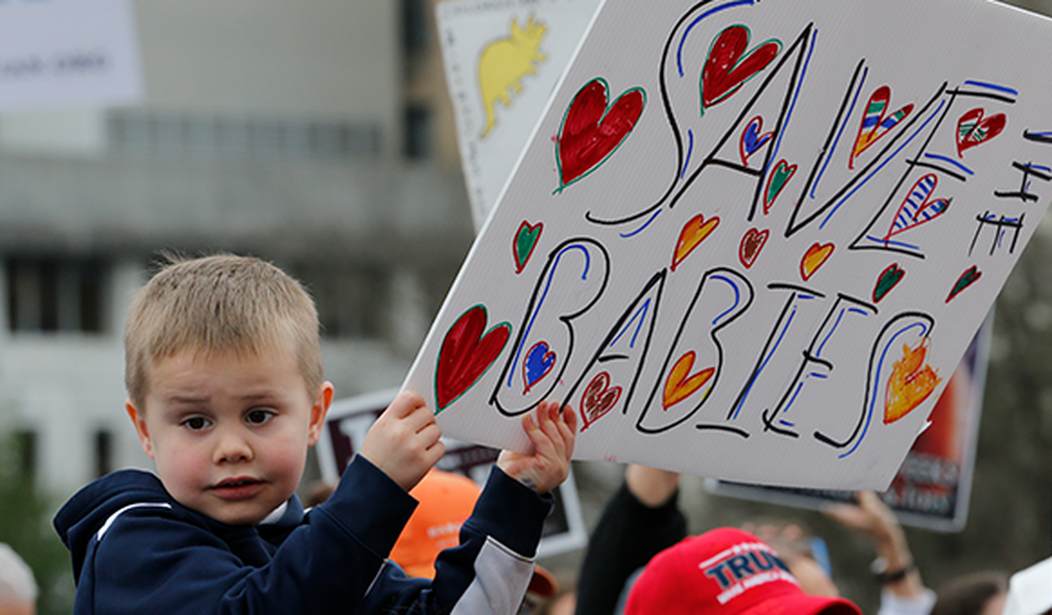If success is measured by a decline in abortion numbers, the pro-life movement has something to celebrate.
The Centers for Disease Control and Prevention (CDC) regularly publishes its annual Abortion Surveillance report around the Thanksgiving holiday. Because of the timing, it often goes unnoticed by the media – but it shouldn’t. The report compiles U.S. abortion data, or the “number and characteristics of women obtaining legal induced abortions and number of abortion-related deaths.” This year’s report released new numbers for 2017 and 2018 that showed an overall decrease in abortion. That’s something that pro-life Americans should celebrate, even if the numbers don’t tell the full story.
The CDC documented 619,591 abortions in 2018 and 612,719 abortions in 2017. These numbers haven’t dropped this low since Roe v. Wade, the 1973 Supreme Court decision that legalized abortion nationwide. That year, the CDC reported 615,831 abortions.
As pro-life outlets note, the abortion numbers recorded by the CDC hit an all-time high in 1990, with a total of 1,429,247 abortions. The 619,591 abortions in 2018 represent a nearly 57 percent decrease in abortion since 1990.
Still, the CDC numbers are imperfect. The real number of abortions is higher – perhaps by hundreds of thousands.
That’s because while the CDC requests abortion data from 52 regions (50 states, Washington, D.C., and New York City), their participation is voluntary. Throughout the years, several regions have declined to release their numbers: Alaska (1998–2002), California (1998–2018), Louisiana (2005), Maryland (2007–2018), New Hampshire (1998–2018), Oklahoma (1998–1999), Washington, D.C. (2016), and West Virginia (2003–2004).
In 2017 and 2018, only 49 reporting areas responded. California, Maryland, and New Hampshire declined. In 1973, all 52 regions were included.
The CDC admits this limitation by pointing to abortion numbers reported by the Guttmacher Institute, a research organization once associated with Planned Parenthood, the nation’s largest abortion provider.
Recommended
“In 2017, the most recent year for which data are available through the Guttmacher Institute’s national survey of abortion-providing facilities, abortions performed in California, Maryland, and New Hampshire accounted for approximately 19% of all abortions in the United States,” the CDC reported. Those were numbers that the CDC didn’t have. But the Guttmacher Institute did.
According to the organization, 132,680 women sought abortions in California, 29,800 women in Maryland, and 2,210 in New Hampshire, for the year 2017. In total, the Guttmacher Institute counted 862,320 abortions in 2017 – rather than the 612,719 reported to the CDC. That’s a difference of 249,601 abortions.
The CDC and the Guttmacher Institute also reported differences in abortion rates (number of abortions per 1,000 women aged 15–44 years) and abortion ratios (number of abortions per 1,000 live births).
According to the Guttmacher Institute, the U.S. abortion rate was 13.5 abortions per 1,000 women aged 15–44 in 2017, and nearly one in five unborn babies, or 18.4 percent, were aborted.
The CDC determined that, in 2017, the abortion rate was 11.2 abortions per 1,000 women aged 15–44 years, and the abortion ratio was 185 abortions per 1,000 live births.
Despite their differences in numbers, both the Guttmacher Institute and the CDC declared historic lows in abortion for 2017. Guttmacher recognized the lowest abortion rate recorded “since abortion was legalized in 1973.” For its part, the CDC found among the 48 regions “that reported data continuously during 2009–2018,” that “decreases were observed during 2009–2017 in the total number, rate, and ratio of reported abortions, and these decreases resulted in historic lows for this period for all three measures.”
Certain numbers still stood out in the report, including the abortion numbers from Washington, D.C. and New York City – the two cities singled out from the states. According to the CDC, for 2018, New York City’s abortion rate was 26.8 abortions per 1,000 women aged 15–44 years, and 457 abortions per 1,000 live births. Washington D.C.’s abortion rate was 25.3 abortions per 1,000 women aged 15–44 years, and its abortion ratio was 518 abortions per 1,000 live births.
In other words, roughly one in three unborn babies are aborted in these two cities, where the number of abortions make up about half of the cities’ birth rates.
Among other factors, the CDC took race into consideration, by compiling data from 31 areas that reported race/ethnicity data for 2018. It reported that “non-Hispanic White women and non-Hispanic Black women accounted for the largest percentages of all abortions (38.7 percent and 33.6 percent, respectively),” while “non-Hispanic Black women had the highest abortion rate (21.2 abortions per 1,000 women) and ratio (335 abortions per 1,000 live births).”
The report also challenged the media’s narrative that abortion is always safe for women. In the CDC report, the data on abortion-related deaths lags a year behind the rest of the data. This year, the report revealed that eight women in 2016 and two women in 2017 passed away in abortion-related deaths.
But abortion always destroys at least one life – which is why the pro-life movement stresses that even one is too many.
























Join the conversation as a VIP Member